Past LatinDisplay
LatinDisplay 2008
LatinDisplay 2008 was held in Campinas (Brazil) from November 17-20, 2008 at the Hotel Nacional Inn in Campinas, where we had the Symposium with oral presentations, a Poster Session and an Exhibition, on November 17-19, and the Display Escola (Display School) on November 20 for people who wanted to learn more about displays.
The number of participants was 228, the majority from the State of São Paulo, viz. 153, 40 came from other States of Brazil and 35 participants came from abroad, the largest group being from the USA (12). Figure 1. shows a picture of the Opening Session of LatinDisplay 2008.
Invited speakers (23) from Brazil, USA, Netherlands, India, Italy, Finland, Germany, Japan and Singapore presented the following lectures:
- Ana Flávia Nogueira (Unicamp) on “Dye-sensitized solar cells”
- Anis Fadul (Corning) on “LCD & photovoltaic market outlook”
- Bernard Coll (Motorola) on “3D-options for mobile displays”
- Dick Henze (HP) on “Challenges and Approaches for Color Reflective Displays”
- Gary McGuire (ITC) on “Field Emission Displays”
- Gopalan Rajeswaran (Moserbaer) on “Solar cell market and technology”
- Ingrid Heynderickx (Delft University) on “Color rendering on displays: what are the challenges”
- John Feenstra (Liquavista) on “Liquavista® displays for mobile multimedia applications”
- John Jacobs (DisplaySearch) on “Display market and trends”
- Jose Lunazzi (Unicamp) on “Estereoscópio com tela holográfica para tomografia”
- Jyrki Kimmel (Nokia) on “Present and emerging mobile multimedia display technology”
- Manju Rajeswaran (Eastman Kodak) on “An analytical perspective on OLED materials development at Eastman Kodak Company”
- Marco Cremona (Inmetro) on “Metrology in Inmetro for displays”
- Margarida Baptista (BNDES) on “Brazil: the alternative for the display industry”
- Norbert Fruehauf (Stuttgart University) on “Active matrix technologies for AMOLEDs and flexible displays”
- Norio Karube (LEMI) on “Fundamentals of Full Body Cleavage of Glass by Laser Induced Thermal Stress”
- Peter Opdahl (Ito Corp.) on “Key concepts, issues and trends in display interconnects”
- Ricardo Teixeira (CERTI) on “Digital TV technologies – Driving new display needs in Brazil”
- Stefano Tominetti (SAES Getters) on “Getter solutions for displays”
- Teresa Atvars (Unicamp) on “Studies on Polymer OLEDs”
- Victor Mammana (CTI) on “Using tablets for education in digital desks”
- Xiaowei Sun (Nanyang University) on “ZnO and its applications in displays”
The quality of these presentations was excellent and the ample discussions after the lectures showed the interest and the participation of the audience. This was the best compliment to the lecturers, indicating that they were able to present their material in a comprehensible way to many non-experts in the audience. The leading display technologies and applications were presented and the lectures gave an excellent view on the state-of-the-art and what can be expected on short notice.
The lectures on Monday November 17, numbered1-5 in the list above, focused on markets and market opportunities for display industry in Brazil. The day culminated in a round table discussion, chaired by Ken Werner (InsightMedia). The lectures of Jyrki Kimmel, Gopalan Rajeswaran, Margarida Baptista, Anis Fadul and John Jacobs were an excellent warming-up for this discussion. As in previous events, the theme was again how Brazil could attract manufacturing industry in the field of displays and solar cells. Apart from Dr Margarida Baptista two other members of the Brazilian “Banco Nacional de Desenvolvimento Econômico e Social” (BNDES), as well as a representative of the “Agência Brasileira para o Desenvolvimento Industrial” (ABDI) participated in the panel discussions. BNDES is a federal public bank that is associated to the Ministry of Development, Industry and Foreign Trade of Brazil; one of the objectives of the bank is long-term financing of innovative start-up companies resulting in the creation of high quality jobs in Brazil. During the lively discussions some interesting ideas were presented that will receive follow-up from a special working group that was established by the Brazilian Government within the framework of a recent Federal Industrial Policy to stimulate/start industrial activities on displays in Brazil.
From an industrial point of view the role of Latin America is insignificant in the Display Scene: the center of gravity of display production is in the Far East, whereas the new innovations on 3D-displays and flexible displays are largely coming from Europe and the USA. However, in applications Latin America is playing a role. The highlight is the digital student desk equipped with PC and tablet: this is a Brazilian innovation, which is gaining momentum now in Brazil and also abroad. This student desk received a great deal of attention at LatinDisplay 2008 during the lecture of Dr Victor Mammana and at the exhibition parallel to the symposium.
Whilst it is tempting to comment on other presentations as well, because the interesting points they raised, it is not practical to do this. Nevertheless it is important to mention that this formula for conferences and round table represents one of the best means of informing on new trends and technologies for displays on a seminar level, with the Brazilian ambiance providing the finishing touch !
In the poster session 50 posters were presented and the best student poster was awarded. Figure 2 shows a picture of the Poster Session.
At the Exhibition 15 exhibitors showed their products and services. Figure 3 shows a picture of the Exhibition.
On November 20, in the wake of the conference, there were 25 participants in the DisplayEscola (School). This activity was organized by the Associação Brasileira de Informática (ABINFO), whose objectives are to promote and develop human friendly and environmentally friendly technology in Brazil and worldwide. The digital student desks were also used during this display school as can be seen in Figure 4.
Daniel den Engelsen
Program Chairman of LatinDisplay 2008
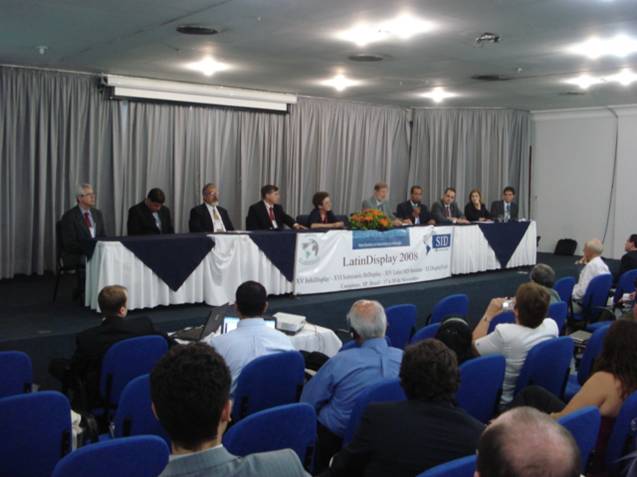
Figure 1. Opening ceremony of LatinDisplay 2008.
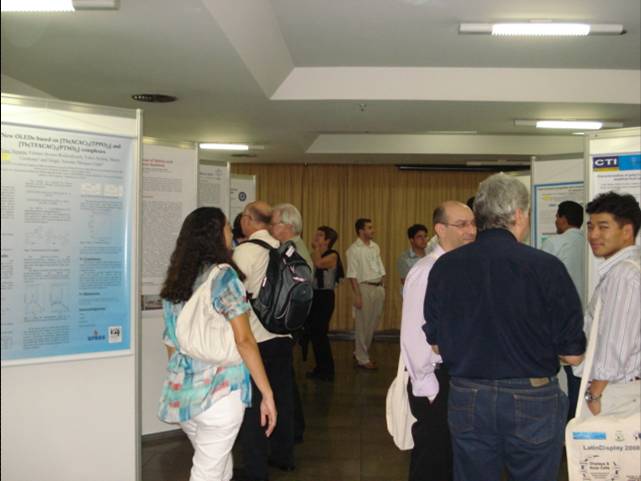
Figure 2. View of the poster session at LatinDisplay 2008
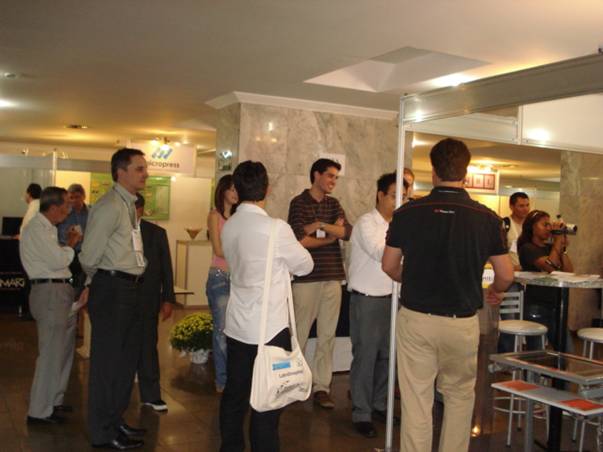
Figure 3. Exhibition parallel to LatinDisplay 2008

Figure 4. Students of the Display School of LatinDisplay 2008 working at the Digital Student Desk equipped with the Brazilian digital tablet.
LatinDisplay 2007
The Nacional Inn Hotel in Campinas hosted from November 12-14, 2007 “LatinDisplay 2007”, an international conference on displays and display technology.
An event of the Latin American SID Chapter, of the Brazilian Network on Displays (BrDisplay Network) and of the Ibero American Network on Displays, this conference was a merge between info-display meetings and display seminars organized over the past 14 years in Ibero America. The conference was organized by the Associação Brasileira de Informática (ABINFO), a cooperative association for R&D on displays and other fields of expertise, together with Centro de Tecnologia da Informação (CTI).
With 189 participants from several countries, 170 from Latin America, 9 from the USA, 6 from Europe, 2 from Taiwan, 1 from China and 1 from India, the event comprehended the presentation of invited lectures given by experts (19) from all the world, a session of contributed papers presented as posters (50) and an Exhibition with 16 exhibitors.
Being the center of gravity for the display industry in the Far East, notably Taiwan, Japan, Korea and China, with a turnover of more than 100 billion US-dollars, why organize an international conference on display technology in Brazil? One of the reasons is the growing deficit in the trade balance of Brazil in the field of electronic devices. Brazil had a display manufacturing activity for a long time, notably on cathode ray tubes. This manufacturing activity has stopped recently because of the declining sales for cathode ray tubes. The assault of flat panel displays based on liquid crystal and plasma technology is irreversible and it has already wiped out the cathode ray tube industry in the Far East, Europe and North America. The price of TV-sets with liquid crystal displays (LCDs) and plasma display panels (PDPs) has been dropping in recent years by approximately 25% per year making them affordable for many people in Latin America. This trend in displays will substantially contribute to the unfavorable trade balance between Latin America and the Far East on high tech devices. One of the objectives of Latin Display 2007 was to address this trend and what initiatives are needed in Latin America, notably Brazil, in dealing with this economic development.
In addition to discussing economic aspects, the conference offered ideal opportunities for the participants to extend their network, exchange information, consider cooperation and so on. These latter aspects were reinforced by a small exhibition parallel to the conference. Some institutes such as the Campinas-based Centro de Tecnologia da Informação (CTI) and the ABINFO, Brazilian and foreign companies provided information on their display-related activities and showed their products and prototypes.
Various lectures given during the conference dealt with the dominance of the Liquid Crystal Display (LCD) technology emphasizing that LCDs will be the most important display technology in the coming decade, because of adequate picture quality and low cost. Much attention was also paid to an emerging technology, the Organic Light Emitting Diodes (OLEDs), which is already applied in cellular phones, but is now also applied in an 11 inch TV, to be introduced in the market by Sony next month. The picture quality of OLEDs is surprisingly good and many experts expect that OLEDs will be cheaper than LCDs in the future. However, that will depend largely on the economy of scale, since it requires that the complete production chain for OLEDs must be in place.
Display experts from all over the world gave lectures, which provided a unique survey on the broad spectrum of display technologies. The keynote address was presented by Dr. Margarida Batista of the Banco Nacional de Desenvolvimento Econômico e Social (BNDES) of Brazil, who gave an intriguing lecture on investing in Brazil: “Brazil: a promising place to invest”.
LatinDisplay 2007 offered ample time for brainstorming and discussing initiatives for creating industrial display activities in Latin America, mainly Brazil. In the afternoon of November 12 there was a lively round table discussion between economists and technical experts. Two excellent lectures served as warming up for this round table discussion, the first by Dr. Samuel Chung, until recently working as CTO in KODAK, on the critical success factors of the display industry, and the second by Dr. Baptista (BNDES), who explained the financial tools and the support of BNDES for starting new activities and companies. Due to an emergency Dr. Chung could not attend the conference, but he was “on line” present via skype, including webcams, and the audience could interact with him directly. This was an interesting demonstration of modern communication technology.
According to Dr. Chung, one of the main characteristics of the display industry is long term vision, which requires a long term investment plan: this is opposite to the current impatient behavior of investors. Other critical success factors of the display industry are critical mass and cooperation along the production chain. Since Brazil and other countries outside Far East region have neither a large “display mass”, nor a sufficiently well developed production chain for LCDs, PDPs or OLEDs, the inevitable conclusion is that Brazil and these other countries need international cooperation to start display manufacturing activities. On the other hand, there are plenty opportunities for creative entrepreneurs in Latin America for special display applications, which do not depend on massive investments in LCD-fabs.
A nice example of such an opportunity was given by Dr. Victor Mammana, head of the display group of CenPRA, in his lecture presenting a new tablet. A versatile input device for computers, this particular tablet, based on a thin layer of tin oxide on a glass plate, is a good example of a Brazilian innovation, ready to be introduced into the market. We are used to the traditional key board and mouse as input devices; however, a tablet presents a more natural way for inputting drawings, graphs and other data. Besides individual use, a tablet offers new opportunities in schools, for teaching basic disciplines like arithmetic, writing and language but also to assist children developing their creativity. At the exhibition a new student desk to support working with large size tablets of about 50x40cm2 were shown (Figure 1. and Figure 2.). This desk will be used by 4000 students in Serrana, a city of 40000 in the State of São Paulo; the prototypes were built in CIATEC (Companhia de Alta Tecnologia de Campinas) of Municipal Government of Campinas, where ABINFO is located.
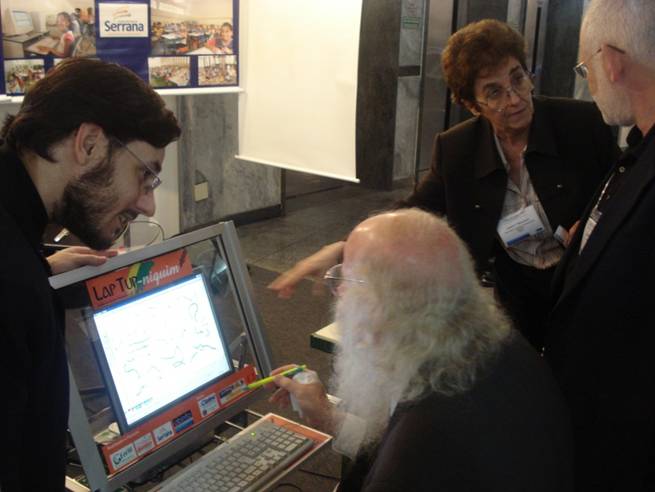
Figure 1. A student desk with an innovative touch screen based on a thin film of tin oxide was shown in the booth of City of Serrana at LatinDisplay 2007 Exhibition.
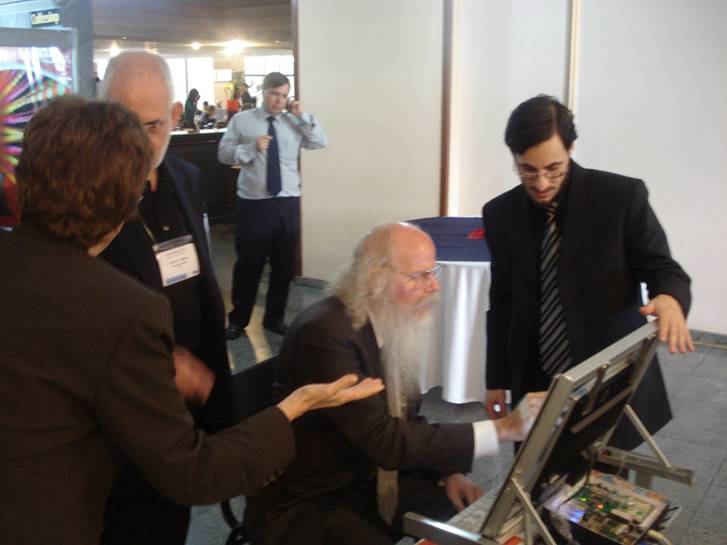
Figure 2. Larry Weber, President of SID, is testing the student desk in the booth of City of Serrana at LatinDisplay 2007 Exhibition.
LatinDisplay 2007 received a great deal of attention from the Brazilian media due to the high tech content of displays. Eight Brazilian TV-channels showed pictures and interviews with organizers and participants of the conference in prime time. Also various Brazilian newspapers reported on this conference.
Because of the broad scope of LatinDisplay 2007 various new business contacts were established and new opportunities for R&D were discussed and may get a follow up. This is a feather in the cap of the organizers of an interesting and stimulating conference.
Daniel den Engelsen
Program Chairman of LatinDisplay 2007